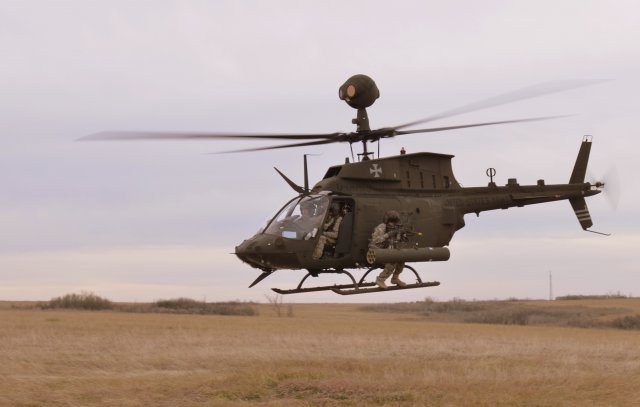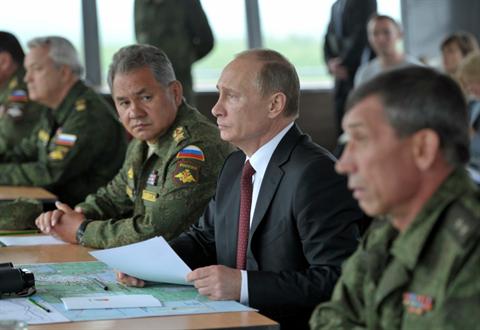The Pentagon is fighting an uphill battle against a fractured Congress eager to rein in deficits, though lawmakers thus far appear either unwilling or unable to do so in a sound and practical manner, according to a recent analysis by Forecast International.
“The discord on Capitol Hill threatens to undermine the Pentagon’s acquisition plans through a combination of uncertainty in the budget process and a lack of flexibility for program planners,” said Shaun McDougall, North America Military Markets and U.S. Defense Budget Analyst for Forecast International. The Pentagon has a long history of adapting to these types of scenarios, but the arbitrary nature of sequestration and its uncertain future make near-term planning especially difficult. All of the major services will have to make some tough choices to adjust to what many believe is the new normal in U.S. defense spending.
The Air Force said it will shield its KC-46 tanker, F-35 fighter, and future bomber from the worst of the cuts.
The service is already having to scale back F-35 production rates to conform to budget caps, however, and the overall procurement target could fall in time. Requirements for the Long-Range Strike Bomber must also be kept in check in order to prevent costs from spiraling out of control.
The Air Force has already tried to implement several force structure changes to conform to recent budget cuts, such as cutting airlift aircraft and Global Hawk UAVs, but has faced congressional backlash. Service leaders now say they may have to cut entire fleets of aircraft, such as the A-10, MC-12W, or KC-10, in order to increase savings. The Air Force may also cut additional C-130s, C-5s, and MQ-9s from their respective fleets. In the end, the Air Force says it could lose 25,000 airmen and 550 aircraft if sequestration cuts are left in place.
Also at risk is the Combat Rescue Helicopter, for which Sikorsky is the sole remaining bidder. Upcoming priorities like a replacement for the E-8 Joint Surveillance and Target Attack Radar System (JSTARS), as well as the T-X trainer program, could also be impacted.
The Army has already been undergoing a series of force structure changes due to its drawdown in the Middle East, though budget cuts are amplifying and accelerating those plans. Active-duty end strength is now slated to fall to 490,000 by FY15, two years earlier than planned, and officials warn that the service could shrink even further if sequestration remains in place.
The Army’s top vehicle acquisition priority, a Bradley replacement known as the Ground Combat Vehicle, could be pushed aside as the budget pressure rises. The Armored Multi-Purpose Vehicle (AMPV), a non-developmental effort to replace aging M113s, could fill its place as the Army’s number one vehicle program. The AMPV will cost less and carry lower developmental risk than the GCV, meaning the Army could save a significant amount of money in the near term by focusing on the AMPV. The service remains committed to the Joint Light Tactical Vehicle (JLTV), and is also starting production of improved Paladin self-propelled howitzers. Upgrades to Abrams tanks and Bradley infantry fighting vehicles (IFVs) remain an area of contention, however, as lawmakers have been fighting a planned production break ahead of the next series of upgrades a few years down the road. At a time when every dollar counts, lawmakers may run out of momentum to continue providing the Army with upgraded vehicles it does not want.
Budget cuts have also resulted in lower procurement rates for Black Hawk, Chinook, and Lakota Light Utility helicopters, though again, Congress has been reinserting money into the budget to soften the blow. At the same time, the next attempt at a twice-failed replacement for the OH-58 Kiowa remains in limbo. Armed Aerial Scout demonstrations fell short of the Army’s goals, and budget cuts could limit the amount of funding available for a replacement effort. The AAS could ultimately be dropped in favor of a more robust OH-58 upgrade, though the Army is also considering divesting the OH-58 fleet altogether and using Apaches to fill the armed scout role as in interim solution until another aircraft can be acquired.
DoD leaders hope their budget woes will be behind them by the time they look to replace thousands of various utility and attack helicopters across U.S. fleets in the 2030s under the Future Vertical Lift program. The Army’s Joint Multi-Role technology development effort, currently underway, serves as a precursor to that program. The Army, meanwhile, has also been struggling with sustainment and modernization of equipment due to sequestration cuts, including refurbishing equipment coming back from combat.
Like the Army, the Marine Corps also faces major force structure changes as combat operations wind down. The service is expected to see its active-duty end strength drop from a high of around 202,000 to around 182,000, though additional cuts may be made if sequestration remains in place.
The Marines want to shed some weight after being bogged down in prolonged ground wars, and refocus on their amphibious roots. With that in mind, one of the service’s top acquisition priorities is developing a new Amphibious Combat Vehicle, though it is unclear if the service can afford to develop a new vehicle while simultaneously upgrading existing Amphibious Assault Vehicles (AAVs), as is the current plan. Technological and cost hurdles may also force the Marines to scale back the ACV’s high-speed water capabilities, and focus on higher speeds only when the technology has progressed and is more affordable.
The Marines have already put their Marine Personnel Carrier program on hold due to funding shortfalls. The service hopes to resurrect the program when funding materializes, though the MPC requirement could disappear altogether if the Marines decide to pursue a larger ACV fleet.
Unclear is whether the Marines will stand by the Joint Light Tactical Vehicle if the budget situation does not improve. In place of JLTV, the Marines may focus on using upgraded HMMWVs or MRAP All-Terrain Vehicles (M-ATVs). The Army is the primary JLTV customer, so a Marine Corps withdrawal would only have a limited impact on the overall program.
The Navy is expected to benefit from the Pentagon’s shift toward the Asia-Pacific region, though the service still faces its own acquisition concerns. In response to recent budget cuts, the Navy has reduced the number of ships it is buying over the course of the Future Years Defense Program, though lawmakers have provided additional funding for a tenth Virginia class submarine and DDG 51 destroyer in the latest block buys.
As it stands, the Navy has reduced the minimum number of ships it says it needs from 313 to 306, though the Navy says the fleet will not reach this size until 2037. Of concern is whether the Navy can afford its shipbuilding plan in the first place, and how ongoing budget cuts will impact the structure of the future fleet.
The Congressional Budget Office, for one, says the Navy is underestimating long-term ship construction costs by 15 percent, and that estimate is based on a Navy spending plan that does not incorporate sequestration. Service officials have stated that the fleet may fall to between 225 and 260 ships if sequestration is left in place.
Of particular concern is the tremendous cost of the Navy’s SSBN(X) ballistic submarine, which will replace the Ohio class. The Navy wants Congress to provide some $60 billion in supplemental funding to buy the new submarines. Service officials have said that funding the program in the Navy’s regular shipbuilding budget would lead to other ships being dropped from the acquisition schedule due to a lack of money in the ship construction account.
The Navy has also faced difficulty transitioning to the F-35 due to program delays, which led to the acquisition of additional F/A-18E/F aircraft to offset a potential fighter shortfall. EA-18G Growler procurement was also bolstered, though production is now coming to a close. Acquisition of new P-8A, MV-22, and E-2D aircraft continues, but budget cuts have been impacting annual production rates for new aircraft.
The Navy is also awaiting the award of a contract for a new presidential helicopter. Like the Air Force search-and-rescue helicopter program, the Navy’s VXX program lost all but one bidder, Sikorsky, due to lower cost caps and revised requirement guidelines. Procurement of a new CH-53K heavy-lift helicopter for the Marine Corps is also approaching, while the Navy is in the early stages of finding a replacement for its carrier onboard delivery aircraft. The service has also been testing its X-47B Unmanned Combat Air System Demonstrator (UCAS-D), and has awarded development contracts for the follow-on Unmanned Carrier-Launched Airborne Surveillance and Strike (UCLASS) program with the intent of deploying a carrier-based unmanned aircraft system (UAS) in the 2020 timeframe.
A major concern for the DoD is that additional cuts may occur beyond sequestration. “Even if sequestration remains in place, the Pentagon’s budget will remain higher than historical post-conflict drawdowns, meaning the DoD could be a target for even more cuts,” McDougall says. Thus far, lawmakers have been slow to respond to warnings from defense leaders about their sequestration plans, suggesting that any resolve to eliminate the automatic spending cuts may be fading.
The likelihood of sequestration becoming the new norm increases with every passing moment that lawmakers fail to reach a “grand bargain” that would alter the cuts. Given the size of the defense budget compared to other discretionary spending accounts, and with deficit hawks eager to keep topline sequester limits in place, the DoD’s coffers will still take a substantial hit even if a long-term budget deal does materialize.
Forecast International, Inc. is a leading provider of Market Intelligence and Analysis in the areas of aerospace, defense, power systems and military electronics. Based in Newtown, Conn., USA, Forecast International specializes in long-range industry forecasts and market assessments used by strategic planners, marketing professionals, military organizations, and governments worldwide.











